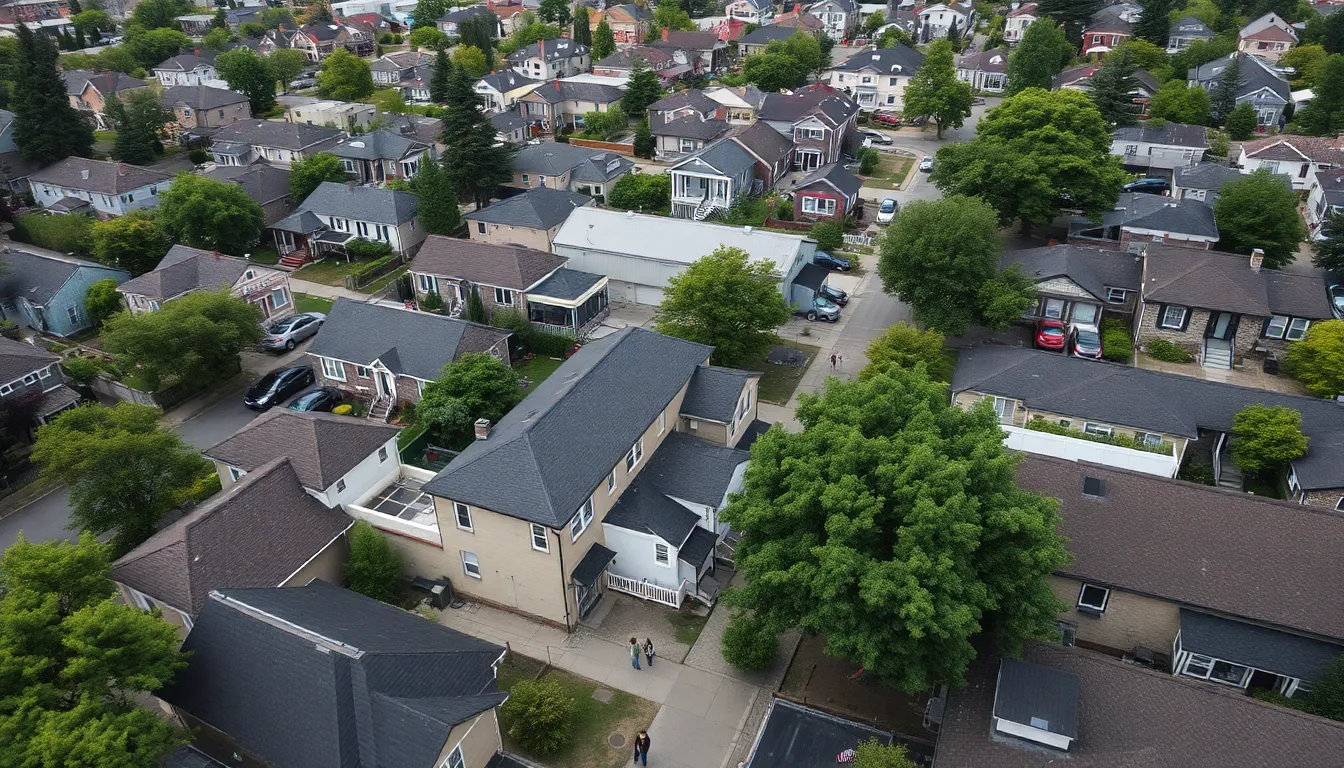Table of Contents
ToggleWhen it comes to investing in real estate, one term often gets tossed around like a hot potato: rental yield. It’s the magic number that tells investors whether their property is a golden goose or just a glorified money pit. Understanding rental yield can make the difference between sipping piña coladas on a beach or drowning in a sea of mortgage payments.
Imagine this: you buy a property, and instead of earning passive income, you find yourself spending weekends fixing leaky faucets. Not exactly the dream, right? By grasping the concept of rental yield, investors can make informed decisions that lead to financial freedom. So buckle up and get ready to dive into the world of rental yield—it might just save your investment portfolio from becoming a horror story.
Understanding Rental Yield
Rental yield represents the annual return on an investment property, measured as a percentage of its total cost. This metric aids investors in assessing the profitability of rental properties by comparing rental income to property expenses.
Definition of Rental Yield
Rental yield calculates the return on investment by dividing annual rental income by the property’s value. For instance, if a property has an annual rental income of $24,000 and a market value of $400,000, the rental yield equals 6%. This percentage offers insight into property performance and helps inform decision-making.
Importance of Rental Yield
Understanding rental yield helps investors gauge potential returns and informs property selection. A high rental yield suggests a strong investment opportunity, enhancing passive income. Conversely, a low rental yield indicates that a property may not generate sufficient income to cover expenses and maintenance costs. Recognizing these aspects aids landlords in identifying profitable investments and avoiding financial pitfalls.
Factors Influencing Rental Yield

Several factors significantly influence rental yield, shaping an investor’s decisions in the real estate market.
Location
Location plays a critical role in determining rental yield. Properties situated in urban areas typically command higher rental prices due to increased demand. Proximity to public transportation, schools, and amenities often translates to more attractive rental properties. Neighborhood stability also matters; areas with lower crime rates tend to attract long-term renters. Monitoring local market trends helps identify potential shifts that could affect rental income. Analyzing comparable properties further aids in assessing potential yields.
Property Type
Property type affects rental yield in various ways. Single-family homes, condos, and multi-family units each appeal to different tenant demographics. Single-family homes often yield lower returns than multi-family units, which can house multiple tenants. Market preferences also shape the desirability of certain property types. Investors should evaluate the condition and features of a property, as updated amenities can attract higher rents. Knowledge of local rental regulations impacts the profitability of various property types.
Market Demand
Market demand directly influences rental yield. High demand for rental properties typically raises rental prices, affecting overall returns. Economic conditions, population growth, and job availability drive this demand. Tracking local economic indicators helps investors gauge the potential for increased rental income. Seasonal fluctuations, holiday periods, and economic cycles can also play roles in demand shifts. Analyzing neighboring areas helps identify up-and-coming locations with potential for growth.
How to Calculate Rental Yield
Calculating rental yield is straightforward and critical for investors. It can help clarify the return on a property investment.
Gross Rental Yield Calculation
Gross rental yield provides a quick assessment of potential returns. To calculate it, divide the annual rental income by the property’s total cost, then multiply by 100. For instance, if an investor has an annual rental income of $24,000 and a property value of $400,000, the calculation looks like this:
[
text{Gross Rental Yield} = left(frac{24,000}{400,000}right) times 100 = 6%
]
This figure offers insight into how well a property is performing before considering expenses.
Net Rental Yield Calculation
Net rental yield accounts for expenses, providing a clearer picture of profitability. To find this yield, subtract operating costs, such as maintenance fees and property taxes, from the annual rental income. Divide the adjusted income by the property’s total cost and multiply by 100. For example, if the annual rental income remains $24,000 but operating expenses total $4,000, net income becomes $20,000. The calculation would then be:
[
text{Net Rental Yield} = left(frac{20,000}{400,000}right) times 100 = 5%
]
This metric highlights the actual return an investor might expect after covering necessary expenses.
Benefits of High Rental Yield
High rental yield provides significant advantages for property investors, notably improved cash flow and enhanced investment appeal.
Increased Cash Flow
Increased cash flow represents one of the most immediate benefits of a high rental yield. Higher rental income allows landlords to cover their operating expenses and realize profits more quickly. Property owners can reinvest surplus earnings into further investments or property upgrades. With a solid cash flow foundation, investors face fewer financial pressures during market fluctuations. Ultimately, sustaining positive cash flow fosters long-term financial stability, ensuring ongoing viability in the real estate market.
Investment Appeal
Investment appeal shines brighter with high rental yield. Investors typically seek properties that promise strong returns, making these options more attractive in competitive markets. High yields often signify robust demand for rental properties, indicating a healthy local economy. Properties yielding consistent returns can draw interest from institutional buyers as well, further enhancing their value. With increased attractiveness, landlords can command higher rental rates, solidifying their market position and enhancing overall profitability.
Challenges Affecting Rental Yield
Various challenges impact rental yield, significantly influencing property profitability. Investors need to recognize these issues to make informed decisions.
Economic Downturns
Economic downturns directly impact rental yield as job losses and declining consumer spending reduce demand for rental properties. Renters may seek more affordable housing options during these periods, leading to increased vacancy rates. Additionally, landlords might face pressure to lower rental prices to attract tenants, which can negatively affect overall rental income. Monitoring the economic climate helps investors gauge potential risks associated with rental properties. They often observe that during recessions, property values can also decline, reducing the potential for capital gains alongside rental income.
Property Management Issues
Property management challenges can substantially lower rental yield. Poor maintenance can lead to tenant dissatisfaction and increased turnover rates, resulting in lost rental income. Moreover, inappropriate management practices may result in higher operating costs, further eroding profitability. Effective communication with tenants enhances satisfaction and encourages lease renewals, which maintain steady rental income. Investors frequently find that well-managed properties attract reliable tenants who pay on time, ensuring consistent cash flow. Keeping a close eye on property management practices directly influences rental yield outcomes.
Understanding rental yield is essential for anyone looking to invest in real estate. It not only provides insight into a property’s potential profitability but also helps investors navigate the complexities of the market. By focusing on key factors like location and property type, landlords can make strategic decisions that maximize returns.
Calculating both gross and net rental yields offers a clearer picture of an investment’s performance. High rental yields can lead to improved cash flow and greater long-term stability. With careful management and awareness of market trends, investors can position themselves for success in the competitive real estate landscape.







